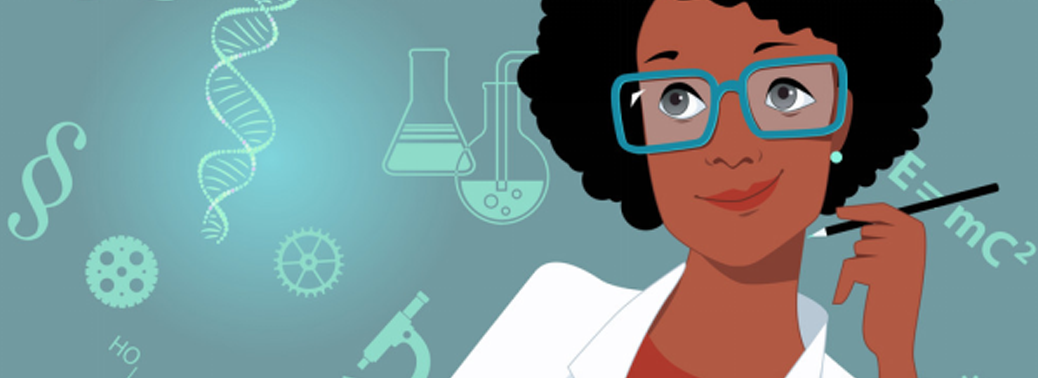WOMEN IN SCIENCE
02, Mar 2020

Prelims level : Science & Technology
Mains level : GS-I Role of women and women's organization, population and associated issues, poverty and developmental issues, urbanization, their problems and their Remedies
Context:
- Recently, National Science Day (NSD) was celebrated at Vigyan Bhawan on February 28 with ‘Women in Science’ as the focal theme. President of India Ram Nath Kovind announced three key initiatives for gender advancement and equality in academic and research institutions on the occasion of National Science Day.
The National Science Day:
- The first National Science Day was celebrated on February 28, 1987.
- On this day, Sir C V Raman announced his discovery, for which he was awarded the Nobel Prize for this discovery in 1930.
- National Council for Science & Technology Communication (NCSTC), Department of Science and Technology (DST) acts as a nodal agency to coordinate the celebration of the National Science Day.
Gender Disparity in Science:
- The world over, women scientists have been in the forefront of ground-breaking research across the world.
- But despite their remarkable discoveries, globally they still represent just 29 % of researchers. In India the numbers have been even less.
- Globally only 3% of the Nobel Prizes for science have been awarded to women, and only 11% of senior research roles are held by women.
- According to a 2018 fact sheet prepared by UNESCO on women in science, just 28.8% of researchers are women. In India, this stands at 13.9%.
- UNESCO data from 2014-16 show that only around 30% of female students select STEM (science, technology, engineering and mathematics)-related fields in higher education.
- In India, a 2016-17 NITI Aayog report compared female enrolment in various disciplines over five years –
- In 2015-16, 9.3% of female students in undergraduate courses were enrolled in engineering.
- Conversely, 4.3% of female students were enrolled in medical science, compared to 3.3% across genders.
- Then, at master’s and doctoral levels, female enrolment remained lower than overall enrolment, and also fell behind for medical science in three of the five years.
- Broadly, women showed a preference for arts; however, female enrolment in science streams rose from 2010-11 to 2015-16.
- The report found that in over 620 institutes and universities, including IITs, NITs, ISRO, and DRDO, the presence of women was 20.0% among Scientific and Administrative Staff, 28.7% among Post-Doctoral Fellows, and 33.5% among PhD scholars.

Why so few women in STEM?
- Main three socio-psychological reasons, namely
- masculine culture
- lack of sufficient early exposure to computers, physics and related areas compared to boys in early childhood
- gender gap in self-efficacy.
- Data from the National Sample Survey Office (NSSO) and the IHDS show that education and employment have a U-shaped relationship (a rise and subsequent decline in employment with the rise in education levels).
- The recent National Family Health Survey data reflect that the increasing levels of education have not offered a greater say in household decisions or freedom of movement outside the home to women.
- Rising education for women does not offer increasing income-earning opportunities or better marriage prospects.
- Social barriers and prejudices have curbed the benefits from the rising education levels of women.
- Their contribution to the economy specifically, or the society as free and liberated members in general, have further been worsened by lack of their participation in STEM fields from school years.
Way Forward:
- Mindset changes –
- Educating boys and girls equally.
- Gender sensitization of male colleagues.
- An integrated approach is needed along with women-centric policy making where women are not treated as passive beneficiaries but are seen as potential contributors to society.
- The scientific community should facilitate women’s participation as both colleagues and leaders.Along with legislative cushions like the Sexual Harassment of Women at Workplace (Prevention, Prohibition and Redressal) Act, 2013, Maternity Benefit Act, social sensitization towards the issues of women is important.
- Measures for increasing education levels should be balanced with the creation of jobs and better facilities for women.
- Special Schemes and affirmative action for women scientists.
- Creating website repository of women scientists & their work.
- Incentivizing institutions to be gender friendly.
- Open and collaborative work culture.
- India has shown a dedicated will to bring changes by pledging to achieve the Sustainable Development Goals which include ideals of gender justice and women empowerment.
- Only with constructive planning and comprehensive changes at various levels of society can the new emerging “women” be able to realize her complete potential in India.
- Creating appropriate infrastructure to help women balance family & professional Responsibilities.Collaboration between scientists and social scientists for a better understanding of the problem.






